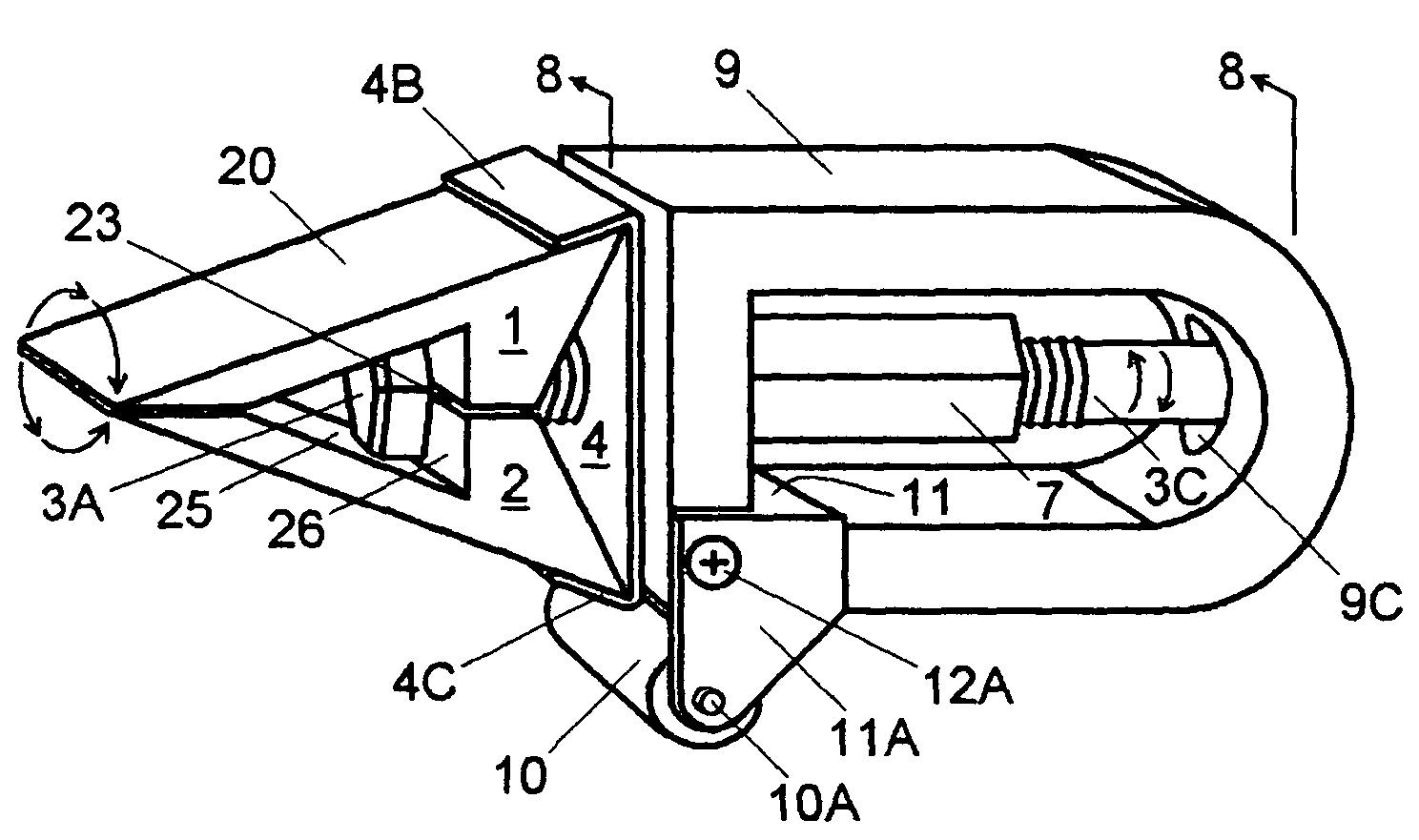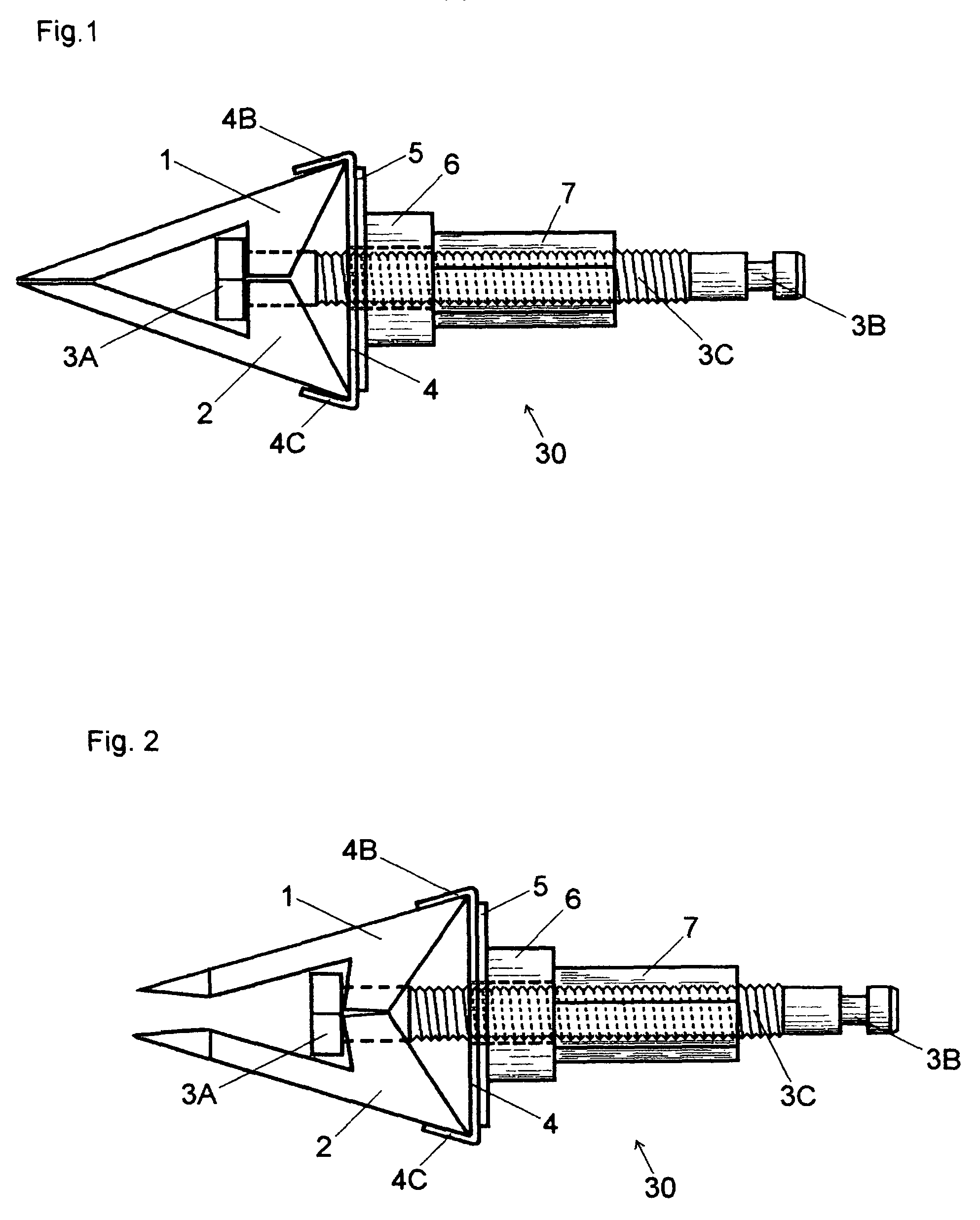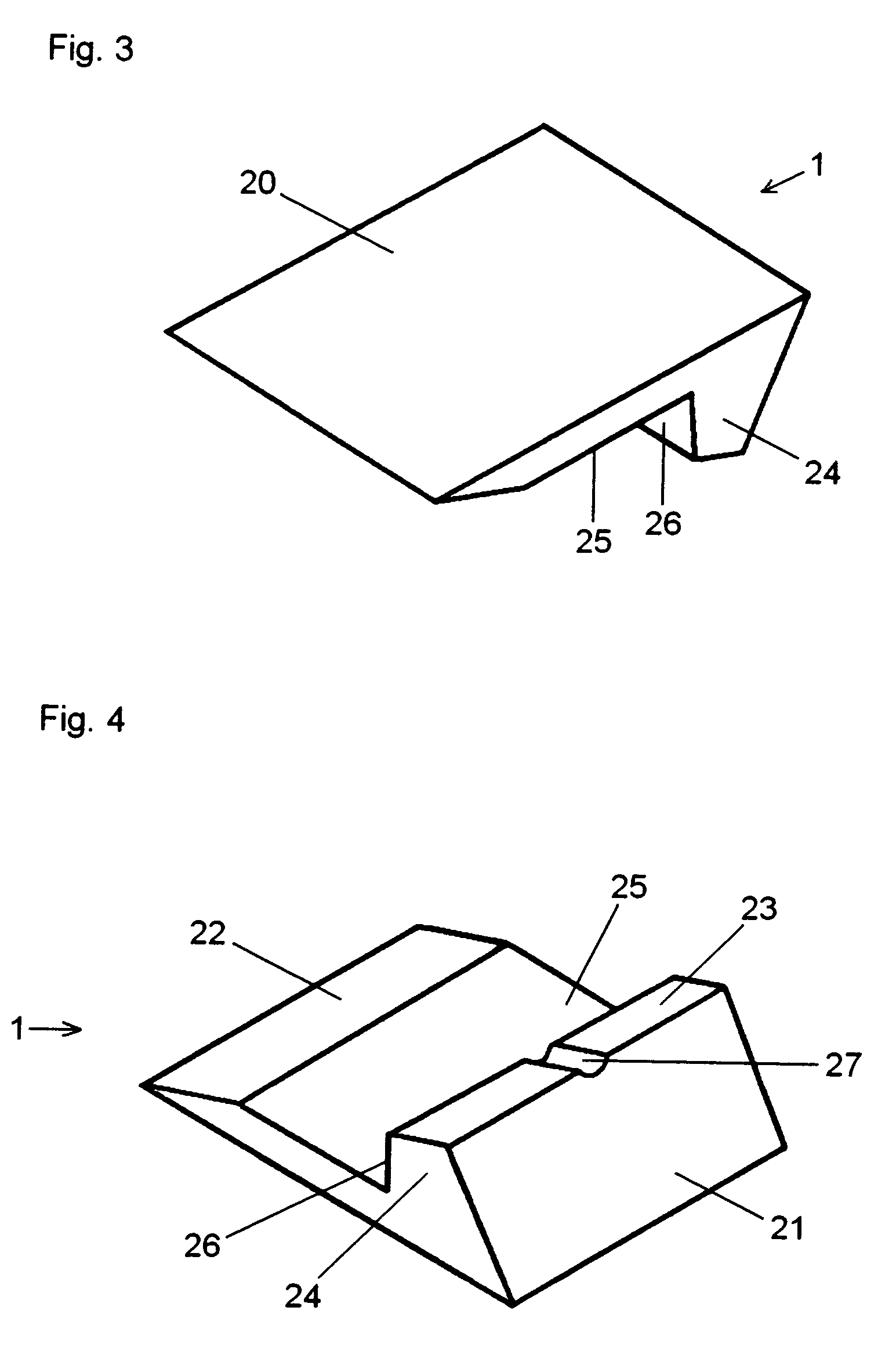Self-aligning blade angle guide
a self-aligning, blade technology, applied in the direction of cutting tools, other manufacturing equipment/tools, manufacturing tools, etc., can solve the problems of requiring a great deal of skill, blades must be unclamped, removed, turned over and re-clamped to sharpen the opposite side, etc., to achieve the effect of minimal effort and minimal opportunity for error
- Summary
- Abstract
- Description
- Claims
- Application Information
AI Technical Summary
Benefits of technology
Problems solved by technology
Method used
Image
Examples
Embodiment Construction
Description—FIGS. 1–10—Preferred Embodiment
[0041]A preferred embodiment of the self-aligning blade angle guide includes: a clamp and axle assembly 30, (FIGS. 1 and 2) which is designed to interchangeably retain one of two matched pairs of special purpose jaw members. Each matched pair differs in configuration and purpose.
[0042]A first pair of jaw members 1, 2 (FIGS. 3 and 4) is designed to grip razor blades and other small flat bodied blades.
[0043]A second pair of jaw members 13, 14 (FIGS. 5 and 6) is designed to grip arrow broadheads.
[0044]Either pair of jaw members 1, 2 (FIGS. 3 and 4) or 13, 14 (FIGS. 5 and 6) may be selectably installed in the clamp and axle assembly 30 by the user, depending on the type of blade to be sharpened.
[0045]The clamp and axle assembly 30 further includes a bolt 3 having at its first end a bolt head 3a, which is standard hexagonal in configuration. Extending from the bolt head 3a is a threaded bolt shaft 3c. Mounted on the bolt shaft 3c is a base plate...
PUM
| Property | Measurement | Unit |
|---|---|---|
| Angle | aaaaa | aaaaa |
| Length | aaaaa | aaaaa |
| Angle | aaaaa | aaaaa |
Abstract
Description
Claims
Application Information
 Login to View More
Login to View More - R&D
- Intellectual Property
- Life Sciences
- Materials
- Tech Scout
- Unparalleled Data Quality
- Higher Quality Content
- 60% Fewer Hallucinations
Browse by: Latest US Patents, China's latest patents, Technical Efficacy Thesaurus, Application Domain, Technology Topic, Popular Technical Reports.
© 2025 PatSnap. All rights reserved.Legal|Privacy policy|Modern Slavery Act Transparency Statement|Sitemap|About US| Contact US: help@patsnap.com



